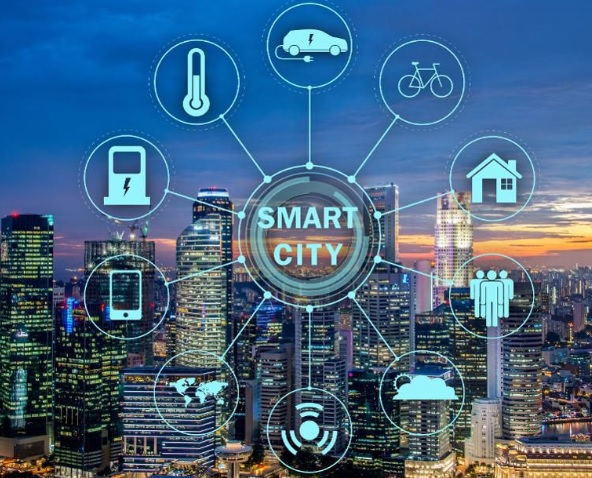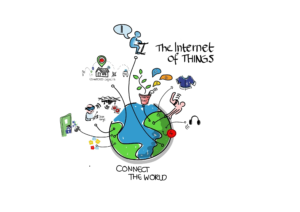What Is Smart City Technology and How Will It Affect Urban Life

Smart city technology is fundamentally reshaping urban landscapes worldwide, impacting everything from transportation and energy consumption to public safety and citizen engagement. This transformative technology is revolutionizing how cities operate, aiming to enhance efficiency, improve quality of life, and promote sustainability. Many urban centers face escalating challenges like traffic congestion, resource depletion, and crime rates. This article explores smart city technology’s potential to offer solutions to these issues, detailing how cities are leveraging technology to create more efficient, sustainable, and livable environments. This exploration delves into the key areas of smart city technology, including its impact on various facets of urban life, and provides insights into the challenges and opportunities ahead.
1. Understanding Smart City Technology
1.1 Defining Smart City Technology
Smart city technology encompasses a range of digital tools and initiatives designed to improve urban services and promote sustainable development. It employs a plethora of interconnected technologies, including the Internet of Things (IoT), data analytics, and advanced communication systems to optimize city operations. This encompasses everything from sophisticated traffic management systems to advanced waste management, and even integrates elements of urban planning and citizen engagement. Smart cities leverage data-driven insights to make informed decisions, enhancing efficiency, sustainability, and the overall quality of life for residents. A strong digital infrastructure is essential to realize the benefits of these technologies.
1.2 Identifying the Core Challenges in Urban Areas
Urban centers worldwide are grappling with a myriad of complex challenges. These include rising crime rates, traffic congestion, pollution issues, and escalating costs of basic services. Inefficient resource management and limited access to crucial infrastructure are frequent obstacles. Many urban centers face immense pressure from a growing population. The need for sustainable practices and optimized resource allocation is paramount. Smart city technology represents a potential avenue for addressing these challenges.
2. Smart City Technology in Action: Smart Transportation
2.1 Optimizing Traffic Flow
Smart transportation systems, a cornerstone of smart city technology, are revolutionizing how urban centers handle vehicular traffic. These systems employ real-time traffic monitoring to identify congestion patterns, providing valuable information for optimal routing and traffic signal adjustments. This data-driven approach can significantly reduce traffic delays and improve overall travel times. Real-world examples illustrate these improvements. For instance, in Singapore, a sophisticated network of sensors and cameras supports optimized traffic light adjustments and traffic flow, resulting in noticeable reductions in travel times for commuters.
2.2 Integrating Public Transportation Systems
Integrating public transportation systems with smart city technology provides numerous advantages. Real-time information on schedules, availability, and potential delays allows for better planning by commuters and can improve overall efficiency. Smart ticketing and payment systems allow for faster and more convenient travel experiences. Integrated systems can be seen across various cities, further promoting their use and effectiveness. An example of such integration is the use of mobile apps in cities like Barcelona to provide real-time information for public transportation.
Related Post : How Biotech Is Pushing the Boundaries of Medicine and Healthcare
3. Impact of Smart City Technology on Public Safety
3.1 Enhancing Security Measures
Smart city technology plays a vital role in improving public safety. Sophisticated surveillance systems, equipped with advanced image processing, can enhance security in public spaces. Data-driven insights and predictive analytics can identify potential threats in real-time, allowing for swift responses. Advanced crime analytics algorithms can detect patterns and provide valuable insights that law enforcement officials can use to proactively address potential problems.
4. Environmental Sustainability Through Smart Cities
4.1 Promoting Energy Efficiency
Smart city technologies are enhancing the sustainability of urban environments. Advanced metering systems for energy consumption and smart grids can lead to optimized energy use. By monitoring energy usage in real-time, cities can identify areas for improvement and implement targeted strategies to achieve significant energy savings. Implementing smart grids and using data-driven energy management systems are crucial for achieving energy efficiency.
5. Citizen Engagement and Participation
5.1 Fostering Community Involvement
Smart city technology fosters greater citizen engagement. Interactive platforms and mobile applications facilitate communication between citizens and city officials. This platform facilitates efficient feedback loops, enabling quicker resolutions to community issues and improved quality of life.
6. Data Analytics and Its Role in Urban Planning
6.1 Optimizing Urban Services
Data analytics is a pivotal component in smart city technology, playing a significant role in enabling more efficient urban planning and improved services. By analyzing large datasets obtained from various sources, cities gain insights into resident needs and preferences and how to tailor services for optimal results. Data analytics allows for better resource allocation and enables a city to respond effectively to changing needs.
7. Looking Ahead: The Future of Smart City Technology
7.1 Anticipating Future Needs
The future of smart city technology will continue to advance and integrate new technologies for the benefit of urban centers. The integration of artificial intelligence (AI) and machine learning (ML) will enable more sophisticated predictive modeling and decision-making processes. This will help urban centers anticipate future challenges and demands. The field of smart city technology is a dynamic and evolving one, offering immense potential for positive impact.
8. Case Study: Smart City Initiatives in Barcelona
8.1 Exploring Barcelona's Experience
Barcelona serves as a prime example of a city embracing smart city technology. Its comprehensive approach, combining various technologies in an integrated way, demonstrates the potential for a sustainable and resilient future. By prioritizing its citizens and incorporating technology, Barcelona sets a benchmark for other urban centers. Specific programs, such as integrated traffic management systems, highlight its innovative approach.
9. Addressing the Concerns Surrounding Smart City Technology
9.1 Addressing Privacy and Security
One of the primary concerns regarding smart city technologies is data privacy and security. A robust data governance framework is essential to protect sensitive information while realizing the benefits of these advanced systems. Prioritizing data security and ensuring transparency about data usage are crucial for building public trust and minimizing potential risks.
In conclusion, smart city technology is revolutionizing urban life by enhancing efficiency, improving quality of life, and fostering sustainability. By embracing innovation and leveraging technology, cities can become smarter, safer, and more livable. Embrace the future of urban living and explore the possibilities of smart city technology. Visit our website to learn more and discover how smart city solutions can benefit your community.
Share this content:














Post Comment